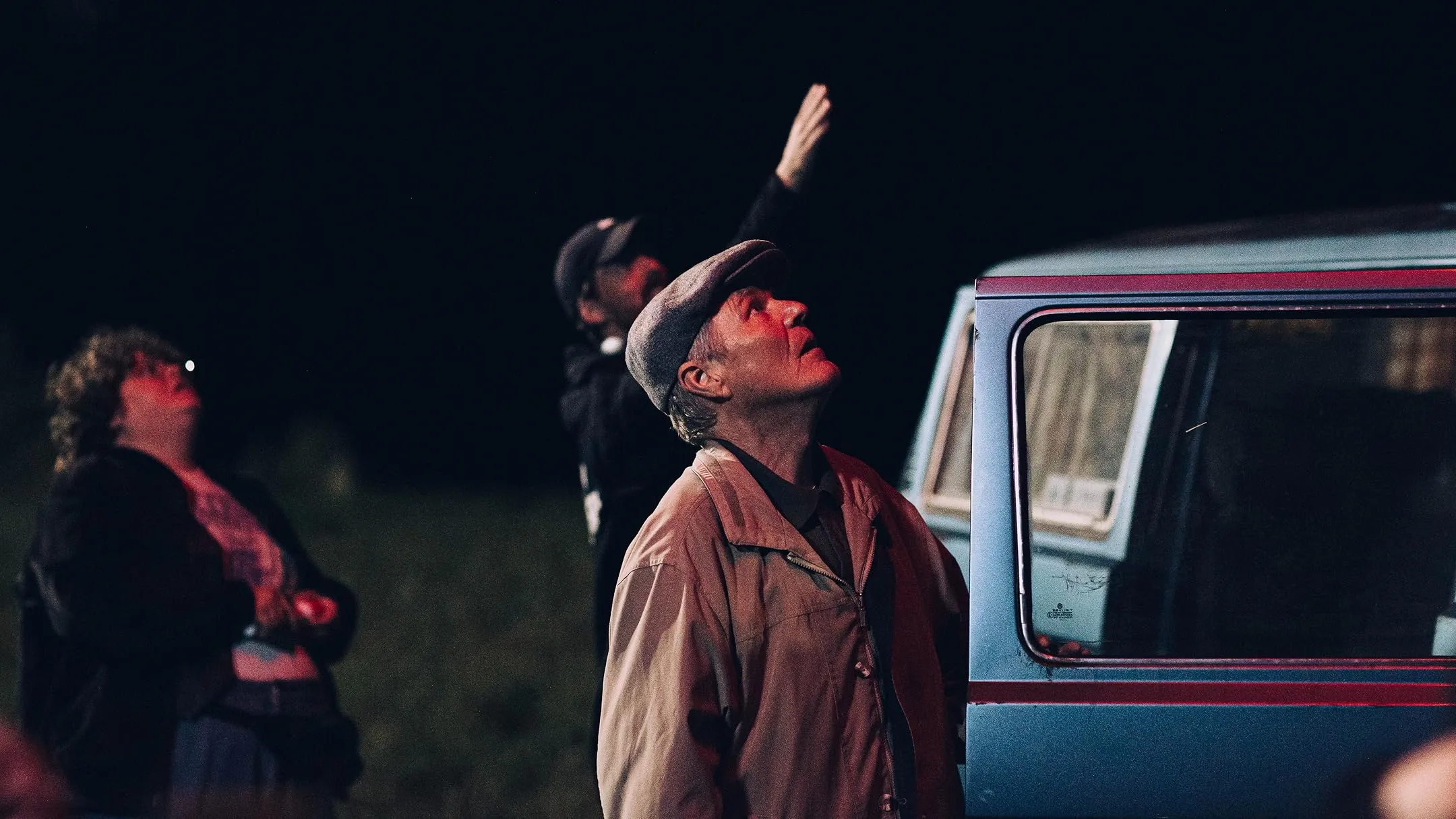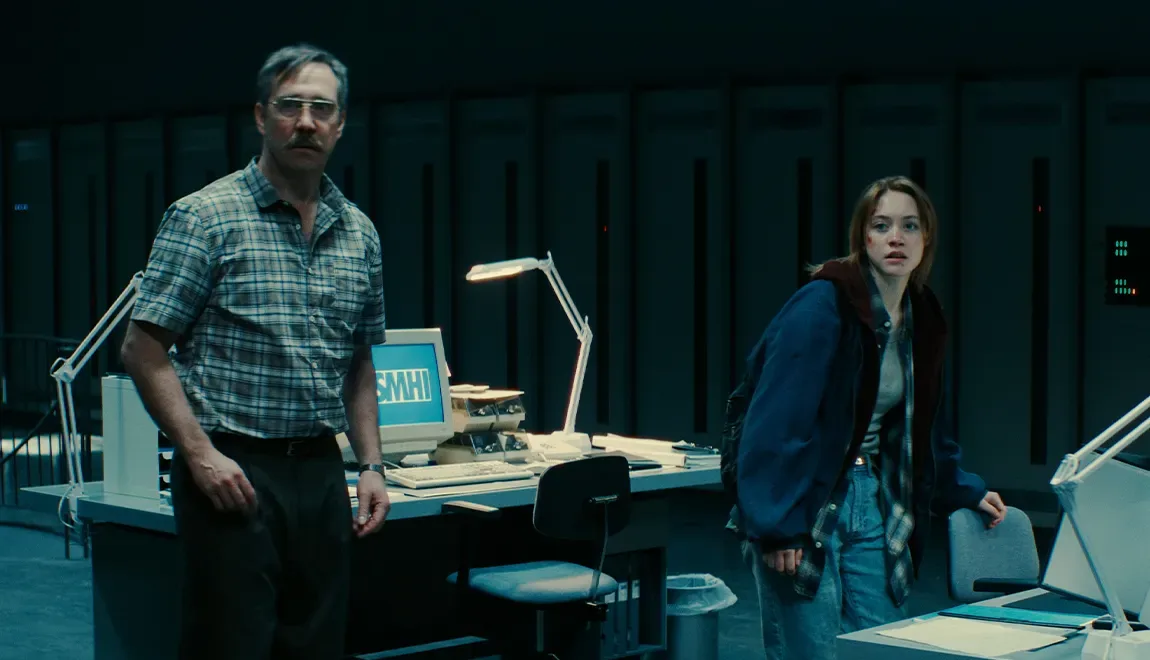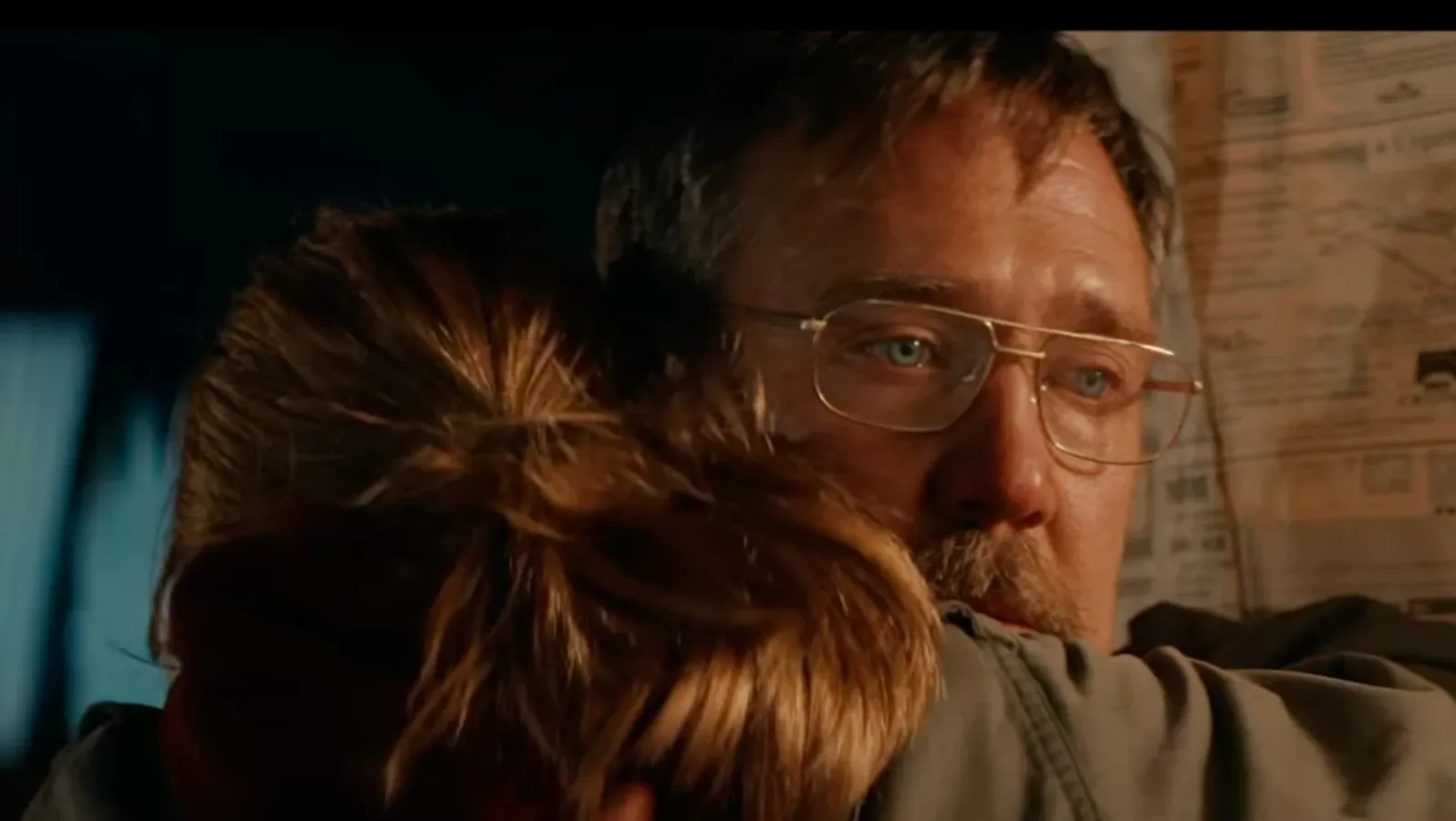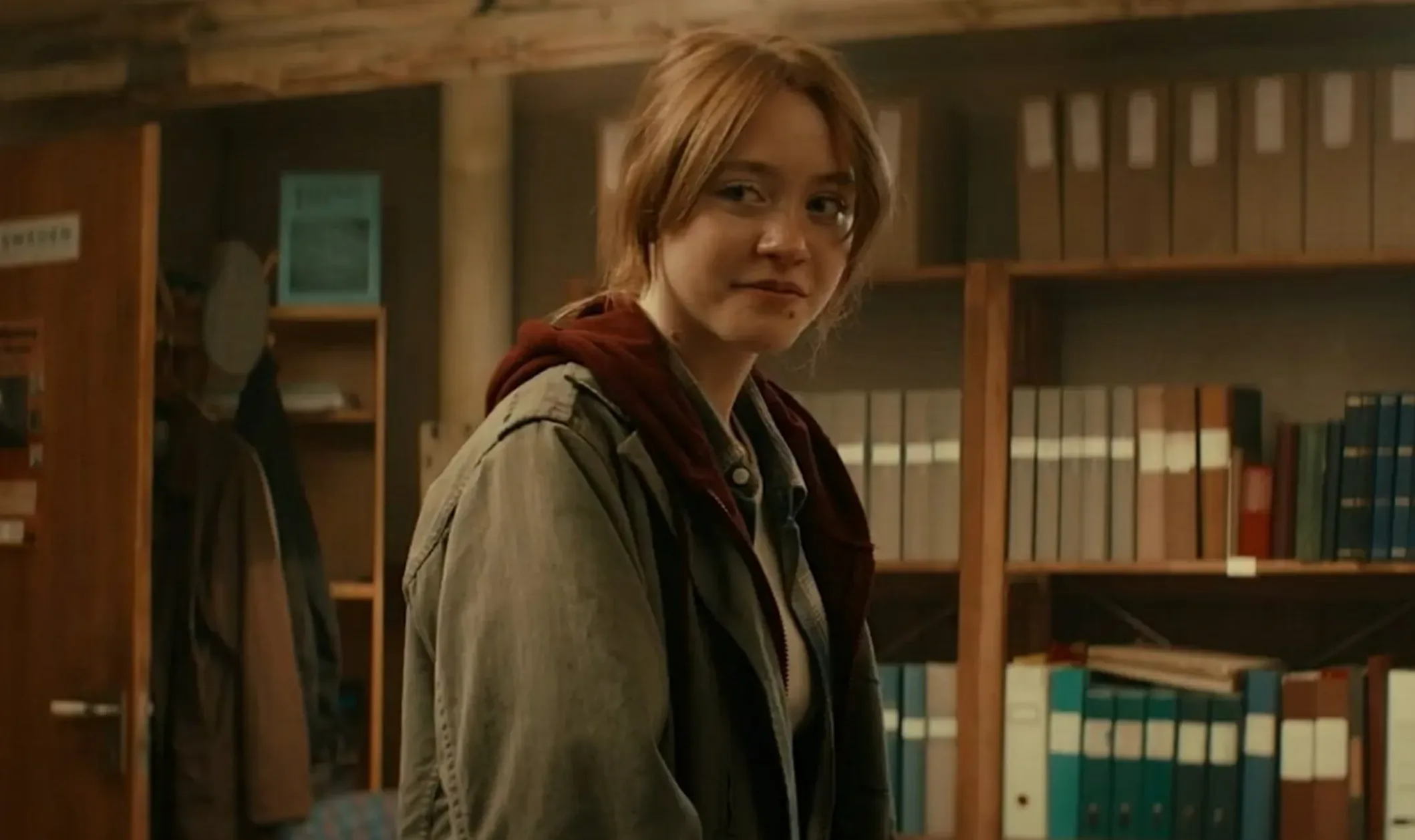Watch the Skies unfolds in a Sweden colored by Polaroid hues and hazy light, as Denise, a cunning teenage hacker, pursues the ghost of her missing father. Set in the mid‑1990s, the film casts its spells through vintage motorcycles, Game Boy–powered break‑ins, and the electric pulse of clandestine late‑night stakeouts. When her father’s scarlet car erupts from an otherworldly orange horizon into a barn, Denise plunges into UFO Sweden—a motley fellowship of skeptics, dreamers, and conspiracy hunters—seeking both proof and personal closure.
Victor Danell marshals Spielbergian set pieces with an almost scholarly devotion to era‑specific detail: the warm glow of CRT monitors, the hum of analog radios, the grain of Super 8 footage projected onto misty fields. Yet those textures serve a deeper purpose than nostalgia; they chart Denise’s movement from isolation toward an uneasy solidarity with Lennart, her father’s former colleague.
Through rousing car chases and moments of silent awe beneath star‑strewn skies, the film asks how far one should push the boundary between faith and evidence, grief and hope. The result is a coming‑of‑age adventure that wears its homage lightly, inviting reflection on the price of obsession and the fragile grace of human connection.
Stitching Sky and Soul
The film’s three‑act structure pulses with a rhythmic logic: the first jolt arrives when Denise’s father’s red car smashes through the barn door—an inciting blast that propels her from shadowed grief into full‑throttle pursuit. Midway, a ribbon of northern lights and a magnetic tug beneath freezing waters realign her assumptions, transforming a scavenging mission into a confrontation with forces that defy measurement. The climax submerges us in deep water as a jury‑rigged magnet dredges what may be alien wreckage, unleashing a wormhole sequence that fuses outward spectacle with Denise’s inner reckoning.
At the story’s core lies a tension between obsession and connection. Denise’s fierce drive isolates her until each fractured relationship—punctuated by a hack‑and‑dash rescue or an uneasy alliance—begins to fill the echoing void left by her father’s disappearance. That void finds shape in UFO Sweden, once a backdrop of comic oddballs and now a lively surrogate clan. Their bond shifts from background color to emotional fulcrum, revealing how chosen families can heal even the sharpest ache.
Underneath every map‑pinned bulletin and weather‑fax reading, Science and Faith duel in the margins. Lennart’s spreadsheets and SMHI protocols collide with Denise’s gut instincts and the punk‑provoked zeal of Töna, creating a dialectic that questions whether proof can ever fully satisfy a hope born of longing.
Pacing hinges on alternating cerebral sequences—silent rows of coordinates, flickering screens—with bursts of raw motion: bike chases under streetlamps, sudden sky‑cracking reveals. Nighttime stakeouts coil suspense until an action beat snaps the tension, each visual crescendo echoing the heroine’s own heartbeat.
Faces of Belief
Denise emerges as a force of nature, her path defined by equal parts ingenuity and raw emotion. She cracks encrypted keypads with a Game Boy’s hum, barrels through quiet country roads on a roaring motorcycle, and yet every triumph is threaded with trembling vulnerability. Her arc arcs from a solitary rebel—one who hoards grief like contraband—into a fragile pillar of communal trust.
In moments of heartbreak, her voice quivers; in moments of defiance, it snaps like steel. That tension between fierce independence and aching need animates Torhaug’s performance, even as her brashness occasionally erects a wall too high to scale.
Opposite her, Lennart stands grounded in measured science, a former meteorologist grappling with loyalty to a man he once felt betrayed by. Jesper Barkselius makes caution feel like courage: the slightest hesitation in his gaze betrays fear, yet every time he steps forward to aid Denise, that reluctance melts into unwavering solidarity. Their shifting alliance—first wary, then wary warmth, then weathered devotion—underscores the film’s question: what bonds can rescue a fractured soul?
The wider UFO Sweden collective offers a canvas of temperaments. Töna’s punkish zeal crackles through each scene, unrepentant wonder at its loudest; Karl’s fragile idealism glints in quiet pauses, a reminder of hope’s delicate edge. Meanwhile, Gunnar and Kicki unleash the film’s friction, their grudges and power plays illuminating how conviction can corrode or cohere a group.
Even authority figures carve depth in small roles. Tomi, the sympathetic cop, shelters Denise with soft resolve—every protective gesture a rebuke to abandonment. Across town, the SMHI head looms as an institutional threat, a reminder that systems can be as unyielding as cosmic forces. In these performances, the human scale matches the story’s celestial ambitions.
Chromatic Reverie
Watch the Skies drapes itself in a ’90s patina, each frame flickering with the warmth of underexposed Polaroids. Primary reds and cobalt blues blaze against washed‑out fields, while mustard‑hued interiors bleed into flickering CRT screens. Period‑correct motorcycles and boxy sedans glide past payphones and brick‑wall graffiti, and Denise’s Game Boy‑powered hacks feel tactile, as though the plastic clacks beneath our fingertips. This production design doesn’t merely evoke an era—it conjures a collective nostalgia, anchoring otherworldly wonder in the familiar textures of analog life.
Cinematographer Hannes Krantz employs a dual grammar of intimacy and awe. Faces fill the frame in tight close‑ups, eyes caught in that flicker of astonishment when night skies shift from black void to electric swirl. Then the lens pulls back into expansive vistas, letting star fields and rolling farmland swallow the characters in their mystery. Light itself becomes a character: backlit scenes glow through haze like cinematic ghosts, while warm interiors cocoon Denise’s small victories, only to cast her out into the frigid, uncompromising blue of open air.
The collision of practical stunts and digital wizardry lives in the film’s more kinetic moments. A car careens through a barn door in a howl of smashed wood and glass—practical chaos stitched seamlessly to CGI splinters. Underwater, a magnetic rig creeps toward an unseen mass, its slow‑motion pull revealing an alien silhouette with visceral weight. Even the AI‑morphed lip movements slip into the mise‑en‑scène: so often near‑perfect that the uncanny flicker feels less like technology and more like an uneasy premonition.
When engines roar beneath streetlamps, Spielberg’s kinetic energy hums in every cut. Motorcycle chases thread through rural lanes like a shot of adrenaline, while police pursuits tighten nerves with juddering mounts and rears. And in the finale’s sky‑gazing sequence, slow zooms stretch the frame across the cosmos, inviting a final breath of awe. Here, the visual style becomes more than ornament; it interrogates how we dream of the unknown, framing grief and hope in equal measure against a sky we might one day pierce.
Echoes in the Dark
The score by Gustaf Spetz and Oskar Sollenberg hums with the longing of a half‑remembered dream, marrying analog synth motifs to swelling orchestral swells that nod to classic ’80s and ’90s science‑fiction. Each electronic pulse carries Denise’s restless energy, while strings unfurl in wave‑like rises that mirror the film’s emotional tides. In moments of revelation, low‑end drones give way to bright, hopeful chords, as though the music itself breathes alongside the characters.
Foley work sharpens the senses: engine roars ground chase sequences in visceral reality, magnetic hums vibrate through underwater salvage scenes, and static‑tinged radio chatter crackles with clandestine urgency. Layered ambience deepens the night sky’s mystery—wind gusts ripple like secret currents, distant thunder rumbles with unspoken portent, and the subtle hiss of field recordings weaves through quieter exchanges, as if the air itself listens.
Dialogue arrives reborn through TrueSync AI, its mouth‑match precision most of the time so seamless it demands a second look. When alignment fractures, the effect feels less like a technological trick and more like a ghostly echo, an apt reminder of the film’s tug‑of‑war between human emotion and mechanical artifice. English‑language delivery remains mostly clear and purposeful, though a few cadences—too even, too detached—whisper of what’s been grafted onto the original pulse of performance.
Command Bridge
Victor Danell’s triple hat as director, editor, and VFX supervisor imprints the film with singular cohesiveness. Every cut, effect, and shot seems conjured by a unified hand, though moments of affectionate homage—those Spielbergian burst shots and wind‑blown wide angles—flicker with such precision they risk feeling referential. The screenplay treads a fine line between high‑voltage set pieces and methodical technobabble, sometimes pausing spectacle for weather‑fax readings and coordinate hunts.
Within UFO Sweden’s cluttered clubhouse, dialogue crackles with eccentric zeal—the sort of spirited banter that makes conspiracies feel alive. Yet those same exchanges segue into dense jargon that can slow the narrative’s heartbeat. Procedure‑driven scenes, drenched in data and static, threaten to pull focus from the emotional core.
Pacing in the opening scenes races ahead, sketching Denise’s restless world through quick cuts: the Game Boy’s glow, motorcycle engine roars, the barn door exploding under a car from the sky. In the central “data‑crunch” act, suspense coils around maps and monitors, flirting with languor as technical layers accumulate. Then the finale snaps the rhythm back into sharp relief: character revelations land with surprising force, and VFX‑wrought spectacle unfurls in concert, releasing the built‑up tension in a surge of cinematic adrenaline.
Dubbed Horizons
The film’s most audacious gesture arrives in its lips—TrueSync by Flawless AI refigures every syllable while honoring the original cast’s emotional timbre. Actors rerecorded their lines in English, yet the AI‑assisted mouth‑match keeps each gaze and grimace fully aligned, dissolving the barrier between language and performance. This technique hints at a shift in global cinema: foreign‑language works might slip seamlessly into U.S. screens, unshackled from subtitles or awkward offsets.
Yet beneath this promise lies a tangle of questions. When machine precision streamlines dubbing, where do voice artists and dialect coaches stand? The process remains collaborative—no one’s face is replaced, and every vocal nuance is theirs—but the specter of automation looms over post‑production rooms once buzzing with human hands. TrueSync skates the line between preservation and erasure, suggesting new economies of labor even as it preserves the actor’s intent.
In its genre DNA, Watch the Skies wears its influences proudly—Close Encounters, Stranger Things, Interstellar—but it carves fresh avenues in found‑family bonds and grief‑rooted wonder. Its emotional core feels earned rather than assembled, even when orbiting familiar tropes. The result is a film likely to linger as much for its technical gambit as for its narrative thrust, inviting viewers who yearn for ’90s sci‑fi aesthetics and heartfelt catharsis to gaze upward and consider the price of immersion.
Full Credits
Director: Victor Danell
Writers: Victor Danell, Jimmy Nivrén Olsson
Producers: Victor Danell
Executive Producers: Emil Wiklund
Cast: Inez Dahl Torhaug, Jesper Barkselius, Sara Shirpey, Eva Melander, Håkan Ehn, Isabelle Kyed, Mathias Lithner, Niklas Kvarnbo Jönsson, Oscar Töringe, Joakim Sällquist
Director of Photography: Hannes Krantz
Editor: Information not specified
Composers: Gustaf Spetz, Oskar Sollenberg
The Review
Watch the Skies
Watch the Skies melds 1990s nostalgia, stirring performances, and audacious AI dubbing into a heartfelt sci‑fi odyssey that falters under dense technobabble yet soars in moments of genuine wonder and found‑family warmth. Visual and emotional payoffs reward viewers willing to journey with its protagonist.
PROS
- Evocative 1990s aesthetic that feels lived‑in
- Thrilling set pieces (motorcycle and police chases)
- Strong found‑family chemistry between Denise and Lennart
- Largely seamless AI dubbing that broadens accessibility
- Moments of genuine emotional resonance beneath the spectacle
CONS
- Extended technobabble sequences can stall momentum
- Denise’s brashness sometimes outweighs empathy
- Occasional uncanny mouth‑sync glitches
- Antagonists lack palpable threat
- Data‑driven scenes risk feeling repetitive





















































